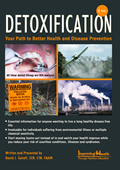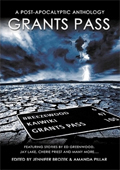OBAMA IGNORES NUCLEAR THREAT AT US-MEXICAN BORDER
By
NWV News writer Jim Kouri
Posted 1:00 AM Eastern
June 8, 2010
© 2010 NewsWithViews.com
President Barack Obama -- who campaigned on a promise to stop the proliferation of nuclear weapons -- welcomed the leaders of at least 40 nations to Washington for his much touted Nuclear Security Summit last month, but he failed to address nuclear problems in his own "backyard," claim his critics.
The
Obama White House claimed before the summit that it "will be the
largest gathering of world leaders hosted by a U.S. president since
the 1945 San Francisco conference that led to the founding of the United
Nations."
Many observers believe that this gathering was nothing more than a political
"dog and pony show" geared to putting the brakes on Obama's
falling approval rating especially on national security issues. They
point to the President's continued refusal to address the vulnerability
to radiological, chemical and biological weapons that exists at U.S.
borders.
"President Obama has not so much as mentioned a recent GAO
report that showed the ease with which weapons of mass destruction
-- including nuclear weapons -- could be surreptitiously brought across
U.S. borders," said former intelligence officer and police detective
Mike Snopes.
VULNERABILITY ASSESSMENT
"In three states, the proximity of the road to the border allowed investigators to cross undetected, successfully simulating the cross-border movement of radioactive materials or other contraband into the United States from Canada." - Covert Operations Report
In the past, officials from the Government Accountability Office testified before members of the U,S. Congress on three separate occasions in order to describe security vulnerabilities that terrorists could exploit to enter the country. Yet, even with reports of border security deficiencies, President Barack Obama cut the number of Border Patrol agents.
According to a report obtained by the Terrorism Committee of the National Association of Chiefs of Police, the GAO's first two testimonies focused on covert testing at ports of entry -- the air, sea, and land locations where international travelers can legally enter the United States.
In its third testimony, the GAO focused on limited security assessments of unmanned and unmonitored border areas between land ports of entry.
GAO officials were asked to summarize the results of covert testing and assessment work for these three testimonies. This report discusses the results of testing at land, sea, and air ports of entry; however, the majority of GAO's work was focused on land ports of entry. The unmanned and unmonitored border areas GAO assessed were defined as locations where the government does not maintain a manned presence 24 hours per day or where there was no apparent monitoring equipment in place.
GAO investigators identified numerous border security vulnerabilities, both at ports of entry and at unmanned and unmonitored land border locations between the ports of entry. In testing ports of entry, undercover investigators carried counterfeit drivers' licenses, birth certificates, employee identification cards, and other documents, presented themselves at ports of entry and sought admittance to the United States dozens of times.
They arrived in rental cars, on foot, by boat, and by airplane. They attempted to enter in four states on the northern border (Washington, New York, Michigan, and Idaho), three states on the southern border (California, Arizona, and Texas), and two other states requiring international air travel (Florida and Virginia).
In nearly every case, government inspectors accepted oral assertions and counterfeit identification provided by GAO undercover investigators as proof of U.S. citizenship and allowed them to enter the country. In total, undercover investigators made 42 crossings with a 93 percent success rate.
On several occasions, while entering by foot from Mexico and by boat from Canada, covert investigators were not even asked to show identification.
For example, at one border crossing in Texas, an undercover investigator attempted to show a Customs and Border Protection (CBP) officer his counterfeit driver's license, but the officer said, "That's fine, you can go" without looking at it.
As a result of these tests, GAO concluded that terrorists could use counterfeit identification to pass through most of the tested ports of entry with little chance of being detected.
In its most recent work, GAO shifted its focus from ports of entry and primarily performed limited security assessments of unmanned and unmonitored areas between ports of entry. The names of the states GAO visited for this limited security assessment have been withheld at the request of Customs and Border Protection officials.
In four states along the U.S.-Canada border, GAO covert investigators found state roads that were very close to the border that CBP did not appear to monitor. In three states, the proximity of the road to the border allowed investigators to cross undetected, successfully simulating the cross-border movement of radioactive materials or other contraband into the United States from Canada.
For example, in one apparently unmanned, unmonitored area on the northern border, the U.S. Border Patrol was alerted to GAO's activities through the tip of an alert citizen. However, the responding U.S. Border Patrol agents were not able to locate the investigators and their simulated contraband.
Also on the northern border, GAO investigators located several ports of entry in one state on the northern border that had posted daytime hours and were unmanned overnight. Investigators observed that surveillance equipment was in operation, but that the only preventive measure to stop an individual from crossing the border into the United States was a barrier across the road that could be driven around.
| Subscribe to the NewsWithViews Daily News Alerts! |
GAO officials also identified potential security vulnerabilities on federally managed lands adjacent to the U.S.-Mexico border. GAO concluded that CBP faces significant challenges on the northern border, and that a determined cross-border violator would likely be able to bring radioactive materials or other contraband undetected into the United States by crossing the U.S.-Canada border at any of the assessed locations.
© 2010 NWV - All Rights Reserved















